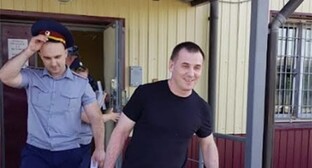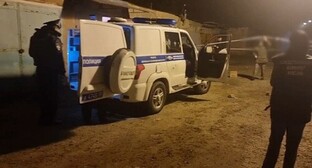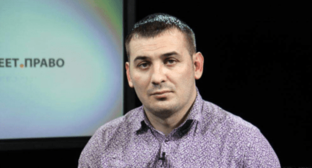04 June 2003, 04:02
Caucasus Albania
One of the most ancient states on the territory of eastern Transcaucasia populated by different nations including Albanians (on the Caspian sea coast, in the lower part of the rivers Arax and Kura). The special historical role of Caucasus Albania was determined by the fact that on its territory there were the ?gates of the Caucasus? (city Chola, in the district if modern Derbent) that was the bridge between Europe and Asia.
Until nowadays the borders of Albania?s territory are not determined exactly. Greeks called Albania the territory from Armenia till the place where lived the nomadic Sarmats. Archeological excavations on the territory of Azerbaijan (in Minchegaur, Chukhurkabal, Sofulu, Kabal, Toprakhkal, Khinislakh etc.), information of antique authors and Armenian chronicle writers point to a fact that in he end of the 1st millenium BC the population of Caucasus Albania practiced plough agriculture, distant-pasture cattle-breeding and different crafts. With this material base and relations of the early slave ownership there appeared a state headed by the king and the chief priest. At the turn of AD in Caucasus Albania there remained the retains of the primitive society property (one of the forms - temple property). According to Strabon, at the turn of the II-I centuries BC in this country there lived about 26 tribes and nations with their ?kings? that were united by one king-military leader. Among the Albans (inhabitants of Caucasus Albania) antique authors mention such ancestors of modern Dagestanians as Gels and Legs ( they lived by the northern border near Sarmats), Didurs (Western Dagestan).
According to Ptolemei in the beginning of AD in Albania there were 29 cities and big settlements. Most likely the center of Albania was Kabala city (in the north Azerbaijan). The biggest center in Dagestan was the city Albana (in the place of the site of an ancient settlement Toprak-khala in South Dagestan). Besides Albana, there were 11 more Alban settlements on the territory of Dagestan, they were not found yet. The cities of Albans had powerful protective constructions.
Albania had a big army: according to Strabon, they had 60 000 footmen and 22 000 horsemen. Albanian society was at the stage of the military democracy.
The rock paintings of Caucasus Albania show that from the primitive magic actions there developed the graphics, painting, folk dances and theater, music and epic stories. Pagan religion of Albania was based on worshipping the Moon, the Sun and fire. In the IV century king Urnair officially adopted Christianity, in the V century Albanian literacy appeared, it was developed by the founder of the Georgian and Armenian alphabets Mesrop Mashtots. It?s known that the throne of the Catolikos (the head of Albanian Christians) was originally located in the city Chora (near Derbent).
Since the IV century BC Albans were constantly at war - first with Alexander of Macedonia on Persian side, then, since the I century BC, against the Roman invasions to Transcaucasia (the battles of Lucull in 69-67 and of Pompei in 66-65 BC), in the beginning of AD - with nomadic Huns. Since the IV century Albania became dependent of Sasanid Iran and in 461 the king?s power was abolished in Albania. Anti-Iran revolts constantly happened in defeated Albania and finally the political independence of the country was restored.
Jevanshir of Girdiman was an outstanding ruler of the Caucasus Albania in the 7th century (the years 638-670). During his reign Albanian literacy was widely spread and there was made ?The Agvan history? written by an Armenian historian Movses Kagankatvatsi. It?s now the main source on the history of the Caucasus Albania. In the modern Azerbaijan villages Lekit and Kum there survived the architectural monuments of the Caucasus Albania of the 5-6th centuries.
In the VIII century the major part of the population of the Caucasus Albania was converted to Islam by the Caliphate. During the IX-X centuries Albanian princes managed to restore the royal power in the Caucasus Albania several times. Then the major part of the territory of the Caucasus Albania joined the Azerbaijan feudal states - Shirvan and the others. Part of modern Azerbaijanians are the successors of the ancient population of the Caucasus Albania.




